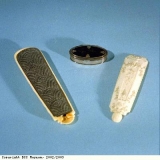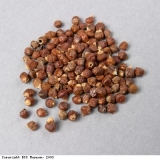Luxuries from Africa
Luxuries were also imported from Africa. Gold and ivory were in great demand in Europe. The Guinea Company, a trading company based in London, was established in 1618 to trade with West Africa, and was mainly interested in gold, not slaves or any other African produce. The 37 merchants who made up the Guinea Company had bought the right to trade with Africa from King James I of England and Scotland. Another trading company, called the ‘Guines Merchants’, were a group of merchants from Bristol who traded with Africa. They originally traded with West Africa for gold and ivory, rather than slaves. Gold was used for making coins, for jewellery and for decorative items. So much ivory was purchased by Europeans in the 17th century that the elephant population of West Africa is said to have declined dramatically. The ship the Greyhound in 1736 returned from Virginia in America carrying 3 tons of ivory purchased in Africa. The tons of ivory imported into Britain were used to make small decorative items, parts of musical instruments, drawer handles and jewellery. Snuff rasps made from ivory are pictured here. Snuff was a kind of powdered tobacco which was sniffed up the nose rather than smoked. It could be bought as a powder. Solid tobacco could be grated on a rasp, like the one seen here, to make fresh snuff powder.
Other African products were imported into Europe in large quantities. ‘Melegueta’ pepper was a seed. It was used like the pepper we use now to flavour food. It was replaced by ‘real’ pepper from the East Indies, probably as the price of East Indies pepper fell as the amount imported to Europe increased. The melegueta pepper was also called ‘Guinea grains’, because it came from the area of West Africa known as the Guinea Coast . This area also became known as the Grain Coast, after the pepper. The Bristol slaving ship the Rachell imported 10,262 pounds, or 4,575 kilos, in 1711.
Logwood, or redwood, a wood which produced red dye, was another valuable import from Africa. Some merchants traded directly with Africa, buying only produce and not people. The ship the Shepherd in 1734, was an example. It returned directly to Bristol from Africa, importing 163� tons of redwood and 24 cwt (1,200 kilos) of ivory.
The enslaved Africans who were brought back to Europe and sold as personal servants, could also be considered as ‘luxury goods’. It was fashionable in Europe to have a small black child as a servant, and such children were often given to white children as a playmate. There are a number of portraits showing such child slaves. One painting from about 1630 shows a small black child with his ‘owner’, who is thought to be one of the Astry family who lived in the Great House at Henbury, near Bristol.




